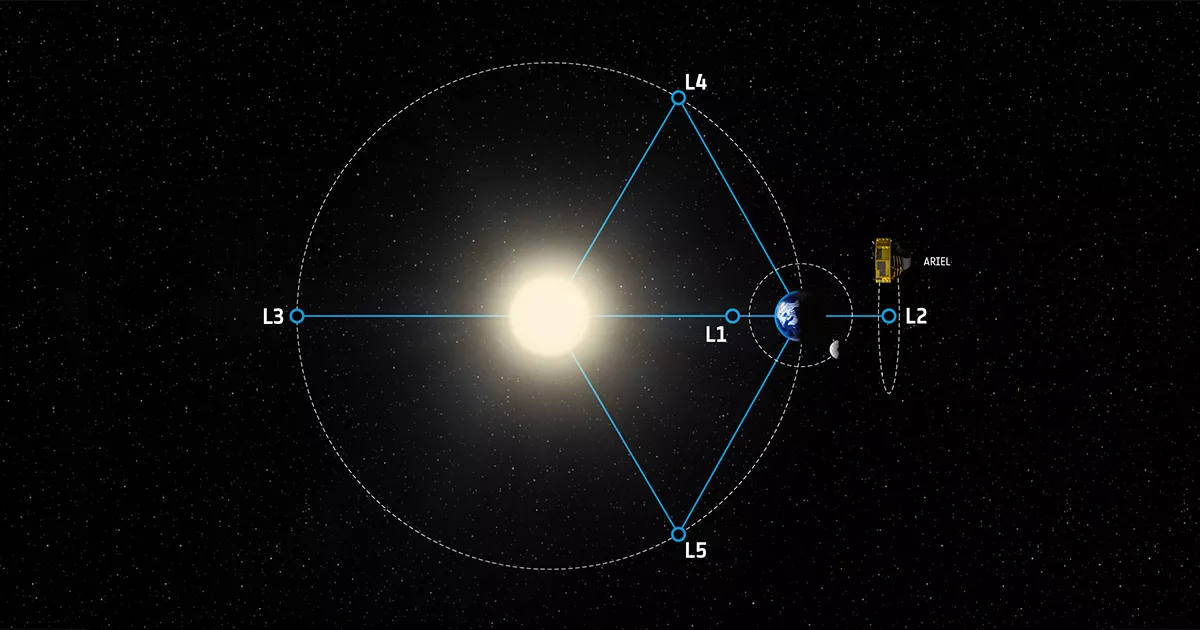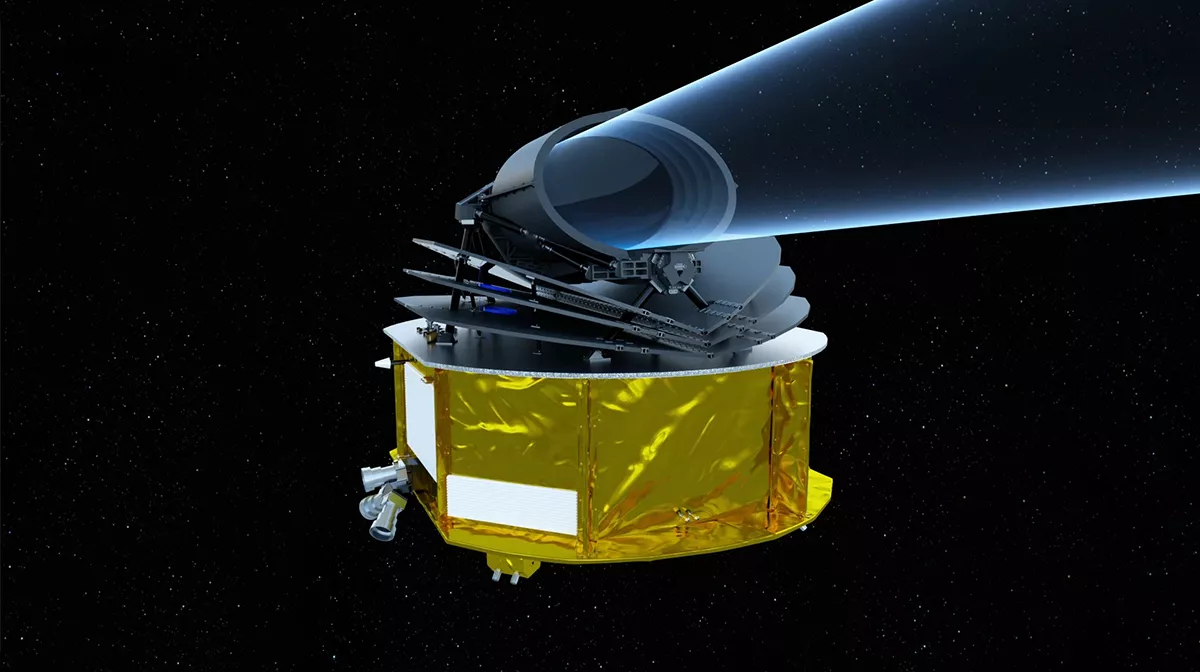The European Space Agency (ESA) have formally adopted Ariel, the first mission dedicated to study the nature, formation and evolution of exoplanets. Hungarian researchers and engineers participate in the program, among them are experts of the ELKH Research Centre for Astronomy and Earth Sciences, Astronomical Institute (ELKH RCAES Astronomical Institute).

More than 50 institutes from 17 countries have been working over the past 5 years to develop the science goals and design the instrumentation which will enable Ariel to survey a diverse sample of around 1000 planets outside our own solar system.
The mission has passed a rigorous set of reviews in 2020 to prove the technical feasibility and science case and has now received approval from ESA’s member states, confirming that the team can work towards a launch in 2029.
Professor Giovanna Tinetti, Principal Investigator for Ariel from University College London said, “We are the first generation capable of studying planets around other stars. Ariel will seize this unique opportunity and reveal the nature and history of hundreds of diverse worlds in our galaxy. We can now embark on the next stage of our work to make this mission a reality."
Ariel will be the first mission dedicated to measuring the chemical composition and atmospheric thermal properties of hundreds of transiting exoplanets. Ariel will give us a picture of a diverse range of exoplanets: from extremely hot to temperate, from gaseous to rocky planets orbiting close to their parent stars.
By looking specifically at hot planets, scientists are expecting to build an understanding of the formation of planets and their evolution. At hotter temperature, which in some cases it can be more than 2000’C, a greater number of exotic molecules will be visible to Ariel. The instruments will then be able to determine what the atmospheres are made up of and provide scientists a unique insight into the planet’s internal composition and the formation history of the planetary system
The Ariel team is taking a very open approach providing rapid access to data and even encouraging enthusiasts to help select targets and characterize stars. Much of the data will be available to both the science community and general public immediately.
Ariel will have a meter-class telescope primary mirror to collect visible and infrared light from distant star systems. An infrared spectrometer will spread the light into a ‘rainbow’ and extract the chemical fingerprints of gases in the planets’ atmospheres, which become embedded in starlight when a planet passes in front or behind the star. A photometer, a spectrometer and guidance system will capture information on the presence on clouds in the atmospheres of the exoplanets and will allow the spacecraft to point to the target star with high stability and precision.
Róbert Szabó, director of the ELKH RCAES Astronomical Institute, Hungarian Co-PI adds: „Ariel is an excellent example of cooperation between Hungarian space research and space industry in an international project. Hungarian contribution is necessary for our researchers to have access to world-class data and to be able to participate in internationally competitive research projects. The most mind-blowing aspect of this mission is that if we ever discover life outside our Solar System, this will happen with instruments like Ariel. Therefore, it is thrilling to see Hungary’s significant contribution to the Ariel project.”
Hungarian contribution to the Ariel program
In addition to the investigation of the exoplanets themselves, researchers of the ELKH RCAES Astronomical Institute (also known as Konkoly Observatory) have an important contribution to the mission by studying the host stars. Understanding stellar activity is a crucial task: first, this is an important source of noise, and events like solar flares may have a direct impact on the exoplanets’ atmospheres, and these changes can be detected with the instruments onboard Ariel. They have also proposed targets to utilize the idle times between scheduled exoplanet transit observations: in these gaps, Ariel could observe the mid-infrared spectra of young stars and brown dwarfs, allowing us to look at the complex chemical processes in the circumstellar disks around young stars. These observations can hardly be performed from the ground, and infrared space telescopes capable of these kinds of observations are still very rare.

Studies based on the measurements from three visual range photometers and broad-band data derived from infrared observations are led by Gyula M. Szabó, director of Gothard Astrophysical Observatory, Eötvös University. Should the mission be successful, these will be the first measurements that will allow simultaneous photometric and spectroscopic investigations of the exoplanets. The accuracy of these measurements will allow the analysis of the planet’s rotation, its rings, specular reflection of the surface in grazing light, moons, evaporation of the atmosphere, or even the study of cometary dust around the planet.

ADMATIS Ltd from Miskolc – leading a team of other Hungarian vendor companies – will deliver flight hardware and ground segment components, as well, to help building Ariel and support logistics and transport on ground. One of the deliverables is a special radiator, which will be built into the payload with the task of controlling the temperature of the critical instruments with high precision inside the space telescope. They also manufacture three containers in which the space telescope will be transported throughout Europe, which will have to ensure the desired temperature and vibration-free environment in clean room conditions for the space probe worth of hundreds of millions of euros. Mounting frames, positioning systems, and stands helping the final assembly of the payload in the UK are also part of the Hungarian contribution.
Hungarian participation in the Ariel program is supported by the Ministry of Foreign Affairs and Trade through the ESA PRODEX program.
Videos:
Ariel animations: https://www.youtube.com/channel/UCMLTUdXBPNS_pDJcGNZoLYw
Welcome to Ariel: https://youtu.be/28afJ_5TTGc
Key facts:
Ariel (Atmospheric Remote-Sensing Infrared Exoplanet Large-survey) Facts and Figures
- Elliptical primary mirror: 1.1 x 0.7 meters
- Instrumentation: 3 photometric channels and 3 spectrometers covering continuously from 0.5 to 7.8 microns in wavelength
- Mission lifetime: at least 4 years in orbit
- Launch date: 2029
- Payload mass: ~500 kg
- Launch mass: ~1500kg
- Destination: Sun – Earth Lagrange Point 2 (L2)
- ESA Mission Cost: ~550 million Euros, plus nationally funded contribution of the payload
- Launch vehicle: Ariane 6-2 from French Guiana shared with Comet Interceptor